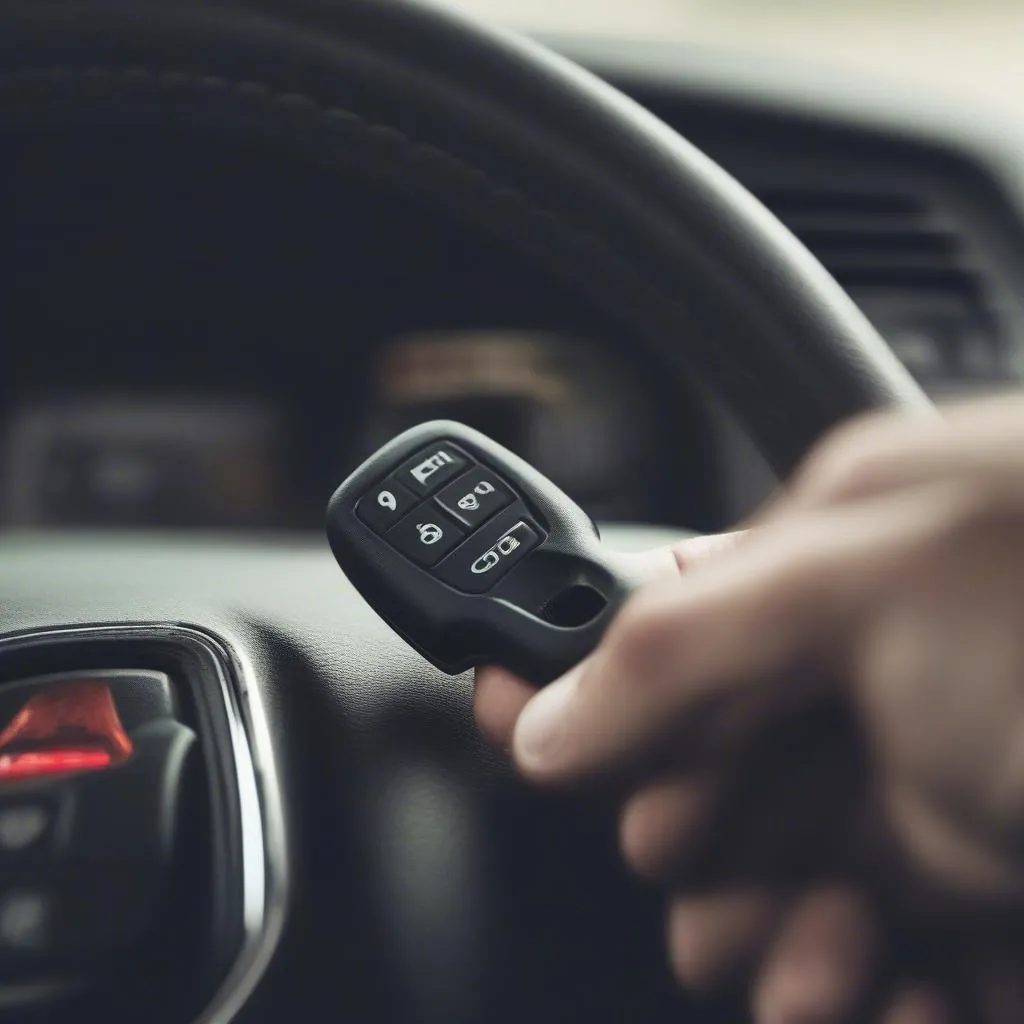If you’re a Subaru Outback owner, seeing your brake warning light illuminate upon starting can be unnerving. While it’s crucial to take this warning seriously, it’s important to understand that a glowing brake warning light doesn’t always signify a critical issue. Several factors can trigger this light, some more serious than others. This comprehensive guide will delve into the common causes, troubleshooting tips, and solutions for a Subaru Outback brake warning light staying on when you first start your car.
Common Causes of a Subaru Outback Brake Warning Light
Understanding why your Subaru Outback’s brake warning light turns on requires familiarity with the car’s safety systems. This light is triggered by several components, each with its own set of potential issues:
- Low Brake Fluid: This is the most frequent culprit. Brake fluid diminishes over time, and a leak in the system can significantly lower its level, prompting the warning light.
- Worn Brake Pads: Brake pads are designed to wear down with use. If they become excessively thin, a sensor within the brake pad assembly activates the warning light.
- Faulty Brake Light Switch: The brake light switch, located beneath the brake pedal, signals the brake lights to engage when you press the pedal. A malfunctioning switch can disrupt this signal, often causing the brake warning light to turn on.
- ABS Issue: Your Subaru Outback’s Anti-lock Braking System (ABS) is crucial for safe braking, especially on slick surfaces. If the ABS system detects a problem, it can trigger the brake warning light.
- Parking Brake Engaged: While seemingly obvious, accidentally leaving your parking brake slightly engaged is a common occurrence. This can illuminate the brake warning light.
Troubleshooting Your Subaru Outback’s Brake Warning Light
Before heading to a mechanic, there are a few troubleshooting steps you can take:
- Check Your Parking Brake: Ensure your parking brake is fully disengaged. Even a slight engagement can trigger the warning light.
- Inspect Brake Fluid Level: Locate your Subaru Outback’s brake fluid reservoir (refer to your owner’s manual for its location). Check the fluid level. If it’s low, adding more brake fluid might temporarily solve the issue. However, it’s crucial to identify and address the underlying cause of the low fluid, such as a leak.
- Visually Inspect Brake Pads: If possible, safely inspect your brake pads through the wheel spokes. If the pads appear significantly thin, they may be nearing the end of their lifespan and require replacement.
When to Seek Professional Help
If your Subaru Outback’s brake warning light remains illuminated after these initial checks, it’s time to seek professional assistance. Driving with a persistent brake warning light can be unsafe, and a mechanic can accurately diagnose and repair the problem.
Here are scenarios warranting professional attention:
- Brake Warning Light Stays On: If the light doesn’t turn off after adding brake fluid or disengaging the parking brake, it indicates a more serious issue demanding professional inspection.
- Soft or Spongy Brake Pedal: This suggests a problem with your brake system’s hydraulic pressure, possibly due to a leak or air in the lines.
- Grinding Noise When Braking: This sound often indicates severely worn brake pads, requiring immediate attention.
- ABS Warning Light Also Illuminated: If your ABS warning light is also on alongside the brake warning light, it likely signifies an issue with your ABS system, requiring specialized diagnosis.
Subaru Outback Brake Warning Light: Remote Diagnostics and Software Solutions
Modern technology plays a significant role in diagnosing and resolving vehicle issues, including those related to your Subaru Outback’s brake system. Remote diagnostics and software solutions offer a convenient and efficient way to address certain problems.
Remote Diagnostics
Some issues triggering the brake warning light, such as those related to the ABS system or electronic parking brake, can often be diagnosed remotely. Specialized software can access your vehicle’s onboard computer, read error codes, and provide insights into the problem’s nature. This can be particularly helpful in identifying the root cause and determining the necessary repairs.
Software Updates and Programming
In certain cases, a software update or reprogramming might be necessary to resolve issues triggering the brake warning light. For instance, a faulty sensor or a glitch in the car’s electronic control unit (ECU) could be resolved with a software fix.
Expert Insight:
“While remote diagnostics and software solutions offer convenience and can address certain issues, it’s essential to remember that not all brake warning light problems can be solved remotely,” says John Miller, a seasoned automotive electrical engineer specializing in remote diagnostics. “Physical inspections and hands-on repairs are often necessary. Consulting a qualified mechanic experienced in Subaru Outback systems is always recommended.”
Conclusion
Addressing your Subaru Outback’s illuminated brake warning light promptly ensures your safety and prevents potential damage to your vehicle’s braking system. While simple checks like brake fluid levels and the parking brake can be done at home, don’t hesitate to seek professional help for persistent or more complex issues. Remember, maintaining your Subaru Outback’s braking system in optimal condition is crucial for safe and reliable driving.

